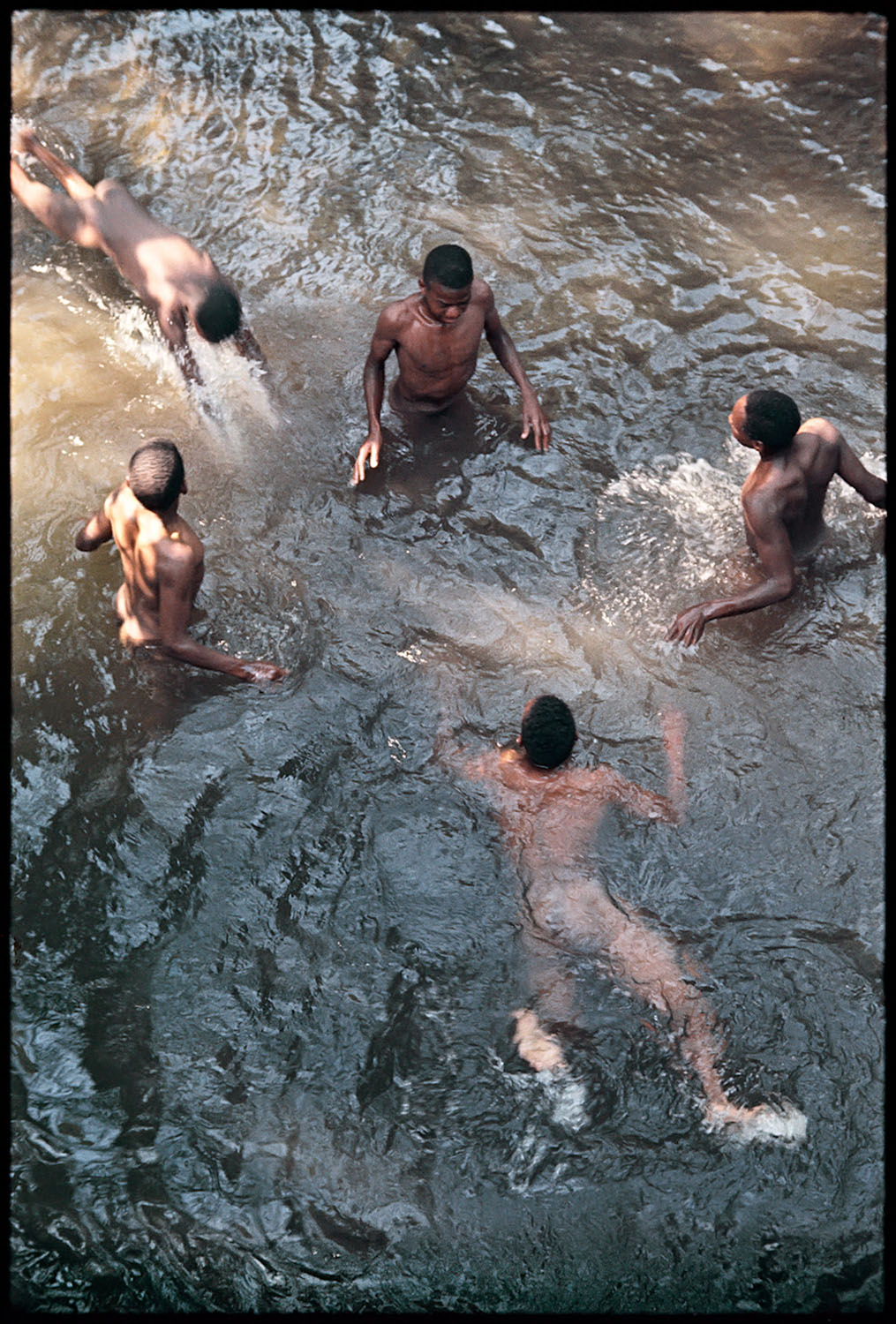Gordon Parks’ luminous photos of Black American life

Gordon Parks (1912–2006) was a singular figure in the 20th century, transcending every boundary erected against Black America to become one of the greatest artists of our times. The self-taught photographer, who barely escaped lynching as a child and ended up homeless as a young teen, used the injustice levelled against him as fuel to chart his own path through the mainstream in order to tell stories of Black America from the inside.
As the first Black photographer working for LIFE magazine, Parks’ photographs of segregation in the South, pictures made in his hometown of Fort Scott, Kansas, scenes of crime in major cities in the 1950s, and documentation of the Civil Rights Movement have become some of the most indelible images of mid-century America.
The new exhibition, Gordon Parks: Half and the Whole, offers an intimate portrait of the complex realities for Black Americans between 1942 and the 1970s. The exhibition opens with an essay by New Yorker journalist Jelani Cobb, drawing parallels between the lives of George Floyd and Gordon Parks, both of whom moved to Minneapolis, Minnesota, in search of a better life.

Untitled, New York, 1963

Department Store, Mobile, Alabama, 1956
Parks, the youngest child of 15, moved to the city in 1928 after his mother’s death; Floyd arrived nearly a century later, in 2014, to rebuild his life after serving time – only to be killed by Police Officer Derek Chauvin in a moment captured on video that launched the biggest Civil Rights protests in the history of the world.
“The great tragedy and beauty of Gordon Parks is that his work continues to resonate so much today: he captured the zeitgeist of his time, including many issues we still face,” says gallerist Jack Shainman.
The parallels between the past and the present are evident throughout much of Parks’ work, though perhaps not quite so clearly stated as in a 1963 photograph where a Black man holds a protest sign bearing the words, “WE ARE LIVING IN A POLICE STATE.”
Despite the trauma Black people have endured in the United States, Parks understood the story of Black America could not be told unless one embraced tender moments of beauty, peace, and bliss as evidence of the triumph of spirit over the forces of destruction.

Untitled, Mobile, Alabama, 1956

Untitled (Malcolm X) Harlem, New York, 1963
“Always, there is a glimpse of the joy that perseveres even in the most hostile circumstances, the glint of light peering through foreboding clouds,” Cobb writes in his essay.
Parks understood survival required more than just struggle: it necessitates the pleasures of family, friends, and being one with nature itself. In his photographs made in Shady Grove, Alabama, in 1956, Parks offers tender moments of daily life; poignant mediations on the quiet dignity human life.
“The images in this exhibition show more than just half the story, encompassing not just the struggles but the everyday lives of his subjects,” Shainman says. “In his photographs, we see injustices, but also moments of play, love, learning, and pleasure. Gordon’s keen eye captured the whole story, which is evident throughout our show.”

Untitled, Harlem, New York, 1963

Untitled, ca. 1946

Watering Hole, Fort Scott, Kansas, 1963

Outside Looking In, Mobile, Alabama, 1956

Untitled, Chicago, Illinois, 1957

Untitled, Harlem, New York, 1963
Gordon Parks: Half and the Whole is on view at Jack Shainman Gallery in New York through February 20, 2021.
Follow Miss Rosen on Twitter.
Enjoyed this article? Like Huck on Facebook or follow us on Twitter.
Latest on Huck

In the ’60s and ’70s, Greenwich Village was the musical heart of New York
Talkin’ Greenwich Village — Author David Browne’s new book takes readers into the neighbourhood’s creative heyday, where a generation of artists and poets including Bob Dylan, Billie Holliday and Dave Van Ronk cut their teeth.
Written by: Cyna Mirzai

How Labour Activism changed the landscape of post-war USA
American Job — A new exhibition revisits over 70 years of working class solidarity and struggle, its radical legacy, and the central role of photography throughout.
Written by: Miss Rosen

Analogue Appreciation: Emma-Jean Thackray
Weirdo — In an ever more digital, online world, we ask our favourite artists about their most cherished pieces of physical culture. Today, multi-instrumentalist and Brownswood affiliate Emma-Jean Thackray.
Written by: Emma-Jean Thackray

Meet the shop cats of Hong Kong’s Sheung Wan district
Feline good — Traditionally adopted to keep away rats from expensive produce, the feline guardians have become part of the central neighbourhood’s fabric. Erica’s online series captures the local celebrities.
Written by: Isaac Muk

How trans rights activism and sex workers’ solidarity emerged in the ’70s and ’80s
Shoulder to Shoulder — In this extract from writer Jake Hall’s new book, which deep dives into the history of queer activism and coalition, they explore how anti-TERF and anti-SWERF campaigning developed from the same cloth.
Written by: Jake Hall

A behind the scenes look at the atomic wedgie community
Stretched out — Benjamin Fredrickson’s new project and photobook ‘Wedgies’ queers a time-old bullying act by exploring its erotic, extreme potential.
Written by: Isaac Muk